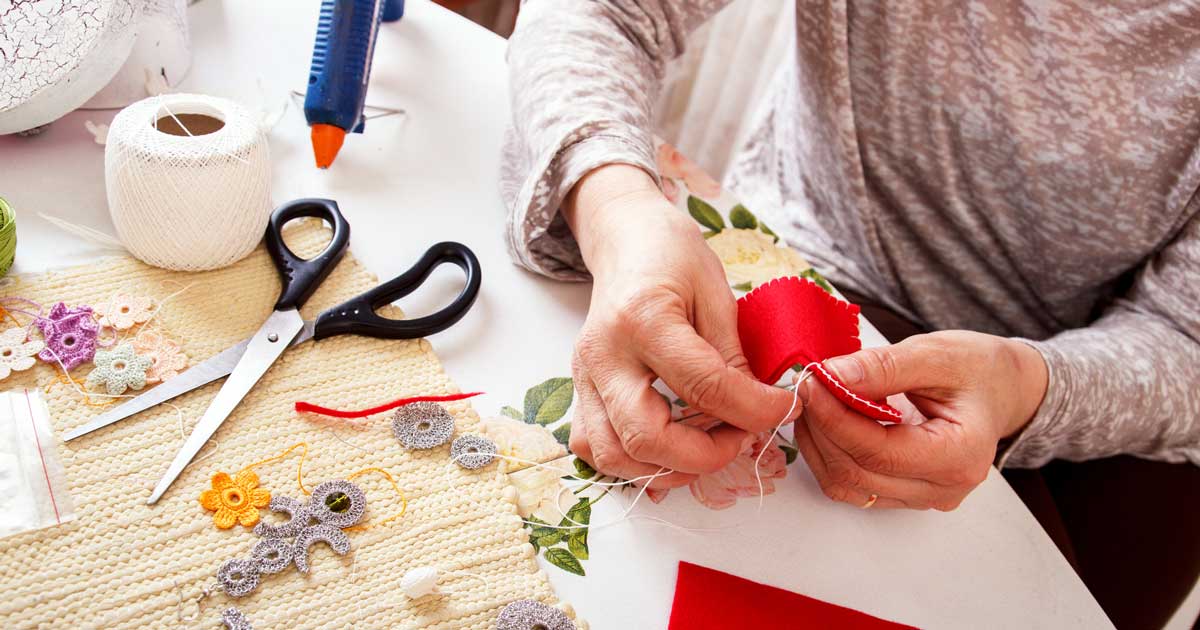While most of us appreciate the beauty that art adds to our lives, it often remained in the background while we were busy with careers and raising children. Fortunately, retirement can change all of that.
When you finally have time to once again call your own, expressing yourself through painting, sculpting or a musical instrument can reopen a world that you might have forgotten.
And if you’ve always assumed you weren’t artistic, you are. You just may need to redefine how you see yourself and what it means to create. But that’s another great benefit of retirement. The doors are all open so walk through. You might just discover that communicating through art brings a fullness to your life that words are simply not able to capture.
Increased cognitive function
The activity of creating art can produce new neural pathways and help the brain use alternative strategies, according to research. As we grow older, these approaches can help us compensate, such as offering a means to express our feelings or to communicate without speaking. It can even improve our mood and increase psychological and physiological healing.
It also turns out that actions are the most effective. While there is evidence that engaging with artistic activities can improve mood and emotions, either as an observer or creator, a Mayo Clinic Study of Aging report found those over the age of 70 who worked on craft projects had a lower risk of developing mild cognitive impairment than those who chose instead to read about creative projects in books. And a German study found that retirees who painted or sculpted improved their spatial reasoning skills and were more resilient emotionally than a group who had attended art appreciation classes.
5 benefits when we communicate through art
We may have forgotten how deeply an artistic expression can touch our lives, but the advantages are immediate and impactful to both physical and emotional well-being. In a recent National Public Radio (NPR) podcast, they discussed how creativity helps you not only connect to yourself but also with the rest of the world. The benefits they examined included:
Improved quality of life
Art and art therapy have been shown to reduce depression and anxiety, increase our self-esteem, help in socializing with others and even provide a window into the meaning and what we see as our purpose in life.
Imagining a more hopeful future
Deciding what you’ll create, which materials, colors and medium you’ll use is also allowing your brain to practice imagining what may happen in the future and how to face it. Art helps you see possibilities in the future beyond the present moment.
Activating the brain’s reward center
With visual expression, the reward pathways in our brains are activated. Spend a few hours in an art studio and you’ll likely perceive the experience as pleasurable. In a study published in The Arts in Psychotherapy, an increase in blood flow was discovered to this part of the brain when participants were involved in art activities.
Lowered stress
A study measuring how the body responds to stress found lower cortisol levels in those who had spent 45 minutes creating art with an art therapist. And it didn’t make any difference in whether they identified themselves as artistic or not.
Maintaining focus
For anyone who has ever been “in the zone” or has lost themself in a project, one commonality is having no sense of awareness, time or space. Art can cause your brain to focus clearly while it engages with several networks including your reflective state, attention and sense of pleasure.
Discover your artistic expression
If you don’t yet have a defined art form that you enjoy or if you would like to give something new a try, here are a few ideas that can get you started:
Painting: Whether you use watercolors or oils, a photograph, a bowl of fruit or your own imagination for inspiration, painting can bring to the canvas your unique view of the world. Take a lesson if you’d like or see what you come up with on your own.
Modeling clay: Clay is fun to play with and can activate many of your senses, including touch, sight and your sense of a three-dimensional space. Working through your fingers and hands, let your mind relax and see what may take shape.
Coloring: Remember how much you loved to color as a child? There’s a reason for that. Research has discovered that coloring inside of shapes can actually boost your mood. Try adult coloring books or geometric designs you can print off the internet. Don’t forget a big box of colored pencils.
Sketching: We may think when we sketch or doodle that we’re looking for a distraction while feeling trapped in a meeting or on a long phone call, but it can also be cathartic. Spend some quiet time just letting your feelings flow through your fingers.
Writing: Whether it’s the story of your life, poetry or creating a collage of words from magazines or newspapers, people have found that once they see it written in words, it’s one of the most effective ways to discover how they feel.
Set the mood before you start
The beauty of art is that it can take the place of communicating if we can’t find the words or our language skills have decreased or gone away. It can also help us relax and shift our focus from more stressful elements of our lives.
Before you begin, if you don’t have access to a studio, it’s helpful if you can claim a room, a table or a corner of a room for your artistic endeavors. Make sure you have all the materials you’ll need. Put on some wonderful background music to fully engage in the mood and let your mind take you wherever you want to go.
Artistic expression can be one of the truly joyful activities in life and what better time to begin or reacquaint yourself with your creative side than in retirement. It’s one of the best ways to communicate with others and yourself and you may be surprised at all the benefits it brings.
We think you will enjoy the many art activities we offer at John Ganton’s Countryside.
If you have questions about short- or long-term care for a loved one call Margaret Nagel at (517) 206-5000 or download our brochure to learn about our care levels, cost, and amenities.


